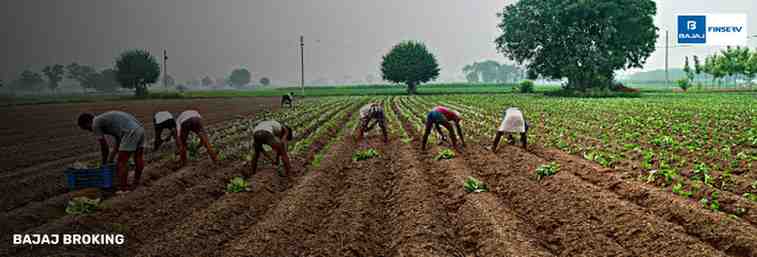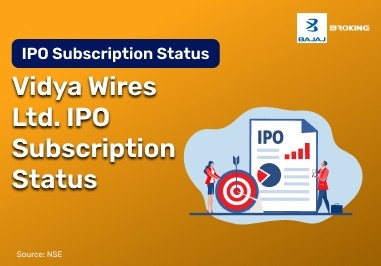The agricultural sector in India plays a very important role in the country's economy, supporting employment for much of the population and adding to the country's Gross Domestic Product. The sector's performance depends directly on the monsoon, which accounts for a major percentage of the nation's rainfall during the year. When the monsoon is accompanied by timely and sufficient rains, it tends to enhance farm productivity, which results in better crop output and higher farmer incomes. This, in turn, can make the situation a positive one for those companies which are part of the agricultural ecosystem, such as those dealing with agrochemicals, fertilisers, and seeds.
As of June 2025, with favourable monsoon forecasts from the India Meteorological Department (IMD) for the upcoming season, there is an expectation of positive momentum in segments related to agriculture. An above-normal or normal monsoon can directly benefit companies that supply inputs to farmers or are involved in the processing of agricultural produce. This article explores how monsoon trends can influence agricultural stocks and highlights some areas to consider within this sector.
Agro-Based Companies
Agro-based companies encompass a broad range of businesses that derive their revenue from agricultural activities or supply products essential for farming. Their performance is often directly linked to agricultural output and rural demand. A good monsoon can lead to better harvests, which can translate into increased profitability for these companies through higher sales volumes or improved margins.
Pesticides and Crop Protection:
Firms producing insecticides, fungicides, herbicides, and pesticides play a pivotal role in safeguarding crops against numerous pests. A healthy monsoon usually prompts the farmer to put more investment in such inputs to maintain the health of the crops and optimise output. Greater acreage going under cultivation because of good rains can also fuel demand.
Agri-Machinery and Irrigation:
Manufacturers of agricultural machinery like tractors, tillers, and irrigation equipment also experience demand shifts tied to the monsoon. A good monsoon can lead to higher farm incomes, enabling farmers to invest in modernising their equipment. Efficient irrigation systems become more attractive with consistent water availability.
Mahindra & Mahindra Ltd. (for tractors and farm equipment)
Escorts Kubota Ltd. (for tractors and construction equipment)
Jain Irrigation Systems Ltd. (for irrigation solutions)
Food Processing and Agri-Commodities:
Companies involved in the processing, storage, and distribution of agricultural commodities can also see benefits. A larger harvest means more raw material availability, potentially leading to higher processing volumes and better capacity utilisation. This can include companies dealing with grains, sugar, edible oils, and various processed foods.
Fertiliser Companies
Fertilisers are essential inputs for crop production, providing nutrients necessary for plant growth. The demand for fertilisers is highly sensitive to monsoon performance and agricultural policies. A robust monsoon generally signals timely and sufficient nutrient application by farmers, driving sales volumes for fertiliser manufacturers.
Urea and Complex Fertilisers:
Companies producing nitrogenous (urea), phosphatic, and potassic fertilisers are at the core of this segment. Their sales are directly correlated with the acreage under cultivation and the health of the monsoon. Government policies regarding subsidies and pricing also play a role.
Coromandel International Ltd.
Chambal Fertilisers and Chemicals Ltd.
Rashtriya Chemicals and Fertilizers Ltd.
National Fertilizers Ltd.
The Fertilisers and Chemicals Travancore Ltd. (FACT)
Speciality Nutrients:
Beyond bulk fertilisers, there are companies that offer speciality nutrients, micronutrients, and bio-fertilisers. Demand for these products can also increase as farmers focus on optimising crop health and yields during favourable monsoon conditions.
Seed Companies
Seeds are fundamental to agriculture, representing the starting point of the crop cycle. Seed companies develop, produce, and distribute various crop seeds, including hybrids and genetically modified varieties, aiming for improved yield, disease resistance, and climate adaptability. A good monsoon season typically encourages farmers to plant more, leading to higher demand for quality seeds.
Hybrid Seeds:
Companies specialising in hybrid seeds for major crops like cotton, maize, rice, and various vegetables often see their sales influenced by planting intentions. Farmers often invest in hybrid seeds to achieve better productivity.
Research and Development:
Companies with strong research and development capabilities, focused on developing new and improved seed varieties that are more resilient to changing weather patterns or disease outbreaks, can also experience sustained demand. This innovation helps farmers adapt and maintain productivity.
Factors Driving Growth in Agricultural Stocks
Several elements contribute to the growth potential observed in agricultural stocks, particularly when a favourable monsoon season occurs. An adequate monsoon generally leads to increased agricultural output and subsequently, higher incomes for farming households. This rise in rural purchasing power typically translates into an elevated demand for agricultural inputs, such as fertilisers and seeds, as well as various consumer goods. Government policies also play a role; measures like minimum support prices (MSPs) for crops, subsidies on fertilisers, and programs aimed at mechanising farming operations can enhance farmer profitability, which in turn benefits industries connected to agriculture. The ongoing requirement for food security in India, driven by its expanding population, ensures a consistent demand for agricultural products. Furthermore, advancements in farming technology, including precision agriculture and the development of higher-yielding seeds, can improve productivity, creating a market for related innovations from agro-based companies. While domestic factors are primary, global commodity price trends can also affect the financial performance of agri-businesses involved in international trade.
Impact of Monsoon on Crop Production and Stock Prices
The monsoon's influence on crop production is a fundamental element in the performance of agricultural stocks. The timing, geographical spread, and overall amount of rainfall directly shape planting schedules, crop development, and eventual harvest yields. Timely and sufficient rainfall during the Kharif season, which spans from June to September, is crucial for the cultivation of staple crops such as rice, pulses, and oilseeds. A monsoon that is well-distributed ensures healthy crop growth, leading to increased yields. This, in turn, often results in a higher demand for essential agricultural inputs like fertilisers, pesticides, and seeds. Improved harvests contribute to increased financial resources in rural areas, leading to greater spending on both agricultural inputs for the subsequent season and a variety of consumer goods, benefiting companies with a significant presence in these regions. A favourable monsoon can also help stabilise food prices by ensuring an adequate supply, which generally supports overall economic stability. Conversely, a deficient monsoon can lead to supply shortages and an increase in food inflation. Agricultural stocks often reflect sensitivity to monsoon forecasts and actual rainfall data. Positive news regarding the monsoon can lead to increased investor interest and upward price movements for companies in the sector, as improved earnings are anticipated. Conversely, concerns about inadequate rainfall can result in negative sentiment. The specific impact can vary among different sub-sectors, with companies more directly tied to crop production often showing quicker reactions.
Risks and Opportunities in Agriculture Sector Investments
Investing in the agriculture sector involves a distinct set of risks and opportunities. The most significant risk is the variability of the monsoon. Unpredictable weather events, such as droughts, floods, or unseasonal rains, can severely affect crop yields and farmer incomes, which directly impacts the profitability of agricultural companies. The prices of agricultural commodities are also subject to fluctuations influenced by demand-supply dynamics, government policies, and international markets. These price changes can affect the revenue and profitability of businesses dealing in agro-inputs or produce. Alterations in government policies concerning subsidies for fertilisers, seeds, or irrigation, or shifts in agricultural trade policies, can also modify the operating environment and profitability of companies. Despite preventive measures, widespread pest infestations or crop diseases can reduce yields, leading to losses for farmers and a decreased demand for agrochemicals. Logistical challenges, particularly during heavy rainfall, can disrupt the transportation of raw materials and finished goods, affecting timely delivery and market access. Furthermore, increasingly strict environmental regulations concerning pesticide use, water management, or sustainable farming practices can impose additional costs or operational restrictions on companies.
However, opportunities also exist within the sector. India's growing population and the global demand for food ensure a sustained need for agricultural products, providing a long-term driver for the sector's growth. Various government initiatives promoting agricultural modernisation, irrigation projects, food processing, and farmer welfare can create supportive environments for growth. The adoption of new technologies such as precision agriculture, biotechnology in seeds, and mechanisation presents opportunities for companies offering these advanced solutions. There is also potential for companies to capitalise on India's agricultural export capacity, especially for commodities where the country holds a competitive advantage. Overall, rural development, including improvements in infrastructure and increased financial inclusion, can contribute to higher consumption of agricultural products and inputs.
Conclusion
As we observe the current monsoon season, the agricultural sector, including companies involved in agrochemicals, fertilisers, and seeds, is a segment that tends to attract attention. The IMD's favourable monsoon forecast for 2025 provides a basis for anticipating positive trends in rural incomes and agricultural output. This can translate into increased demand for inputs and a generally supportive environment for businesses operating in this space.
However, it is also understood that the agricultural sector's performance is subject to a range of influences beyond just rainfall, including commodity price movements, government policies, and broader economic conditions. Those observing this market often consider a comprehensive view, integrating weather forecasts with other relevant data points to form their understanding of potential developments within this key sector of the Indian economy.
Disclaimer: This article is for informational purposes only. It is not financial advice and does not recommend any specific investments. Readers should conduct their own research and consult with a qualified financial advisor before making any investment decisions.














